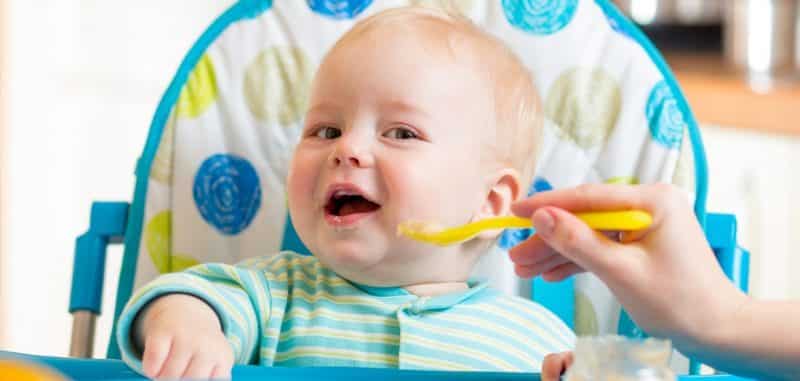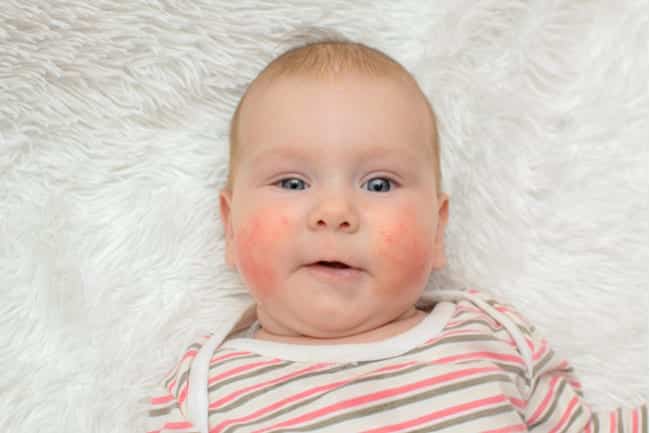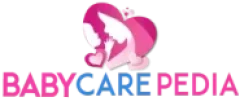Baby food allergies are an increasing concern for many families. You’ll learn how the timing of starting different foods for your baby relates to developing allergies and eczema. When is the safest time to start strawberries for a baby? Yogurt? Peanuts?
Baby Food allergies
Allergies There is scant evidence, as we’ve seen earlier, that when moms avoid specific foods during pregnancy, they reduce allergies to those foods in babies.
Whether or not avoiding peanuts during pregnancy reduces allergies in children has been quite controversial.
Diet high in plant foods (fruits, vegetables, whole grain bread and cereals, legumes, and nuts), moderate amounts of dairy products and eggs, and very little red meat. The diet is also high in olive oil and fish.
Some of the most common problems new parents encounter involve sleep issues. We’ll discuss the changing, two-way relationship between food and sleep.
How do sleep habits affect eating? How do eating habits enhance or disrupt sleep, theirs and yours?
Yet there is some evidence for reducing allergies by eating certain foods. Three food choices, in particular, seem to be beneficial:
- Probiotics: I’m a big fan of probiotics (beneficial bacteria, such as those found in yogurt or kefir) for pregnant women because their consumption is linked to decreased eczema and other allergies in babies.
- Omega-3 fats: Foods rich in omega-3 fats, such as wild salmon, omega-3 eggs, walnuts, and flaxseed.
- Organic milk: Studies of organic milk have found healthier fat profiles in the milk, more omega-3s, and CLAs (conjugated linoleic acids), which may help reduce body fat and hinder tumors and inflammation.
Studies of nursing mothers who switched from conventional to organic milk found more of these healthier fats in the mother’s breast milk.
One study of pregnant and nursing women who switched from conventional to organic milk found a third less eczema in their babies.
Advised to prevent or lessen allergies
Food Allergy Some food allergens, including cow’s milk protein, peanuts, and eggs, can come from breast milk. It has been recommended that nursing women avoid these to prevent allergies.
There is no convincing data that mothers avoiding anything while nursing prevents food allergies in the long run.
If a food allergy in the baby already exists, the mother’s avoiding that food while nursing is helpful.
For formula-fed babies, a hydrolyzed formula may help prevent some food allergies.
Is Your Baby Allergic? How do you tell if your baby is allergic or intolerant to something?

Usually, you will not see a quick, visible response to a formula or food. Instead, you might see eczema or another skin rash, fussiness, loose stools, hard stools, or blood in the stool.
In celiac disease, an intolerance to the grain protein gluten is not a true allergy; you might see diarrhea, smelly stools, irritability, and poor weight gain.
Allergy testing can be done in babies. A negative result doesn’t tell you much at this age either way. Still, a positive impact indicates a real allergy (as opposed to tests done at age four, when a negative result is likely real, and a positive effect may only show a possible culprit).
There is also specific testing for celiac disease. If you think your baby may have an allergy, consult your healthcare provider.
Allergies There is scant evidence, as we’ve seen earlier, that when moms avoid specific foods during pregnancy, they reduce allergies to those foods in their babies.
How to diagnose baby food allergies?
How can I tell if my infant has a food allergy?
Nobody knows for sure, but Baby food allergies could be quite common. The gut lining lets in more proteins in the first three months of life, and some foods can trigger a process that later causes allergic reactions.
However, some people blame all symptoms on food allergies, and some children (and adults) are fed very restricted diets when there is no real evidence of an allergy.
What causes food allergies in babies?
What are the most common food allergies? In young children, the most common are:
- Allergy to peanuts and other nuts
- Celiac disease (wheat/gluten allergy)
- Cow’s milk protein intolerance (this often clears up by the age of two). What is the difference between food allergy and food intolerance? Both terms mean that eating food causes a reaction.
An allergy means that the immune system is at fault. Intolerance means there’s no hard evidence of the immune system being involved.
What symptoms can food allergies cause?
Symptoms range from mild to severe and can include:
- Rashes (such as eczema and hives)
- Diarrhea or vomiting
- Failure to grow or put on weight
- Coughing or wheezing
- Anaphylactic shock.
Do food allergies run in families? Allergies are more prevalent in some families so food allergies can be familial, but this is not always the case. Is diarrhea always the result of a food allergy?
No. Although diarrhea can result from a food allergy, it isn’t a common cause. Diarrhea can also affect the form or texture of a food item rather than the ingredient itself.
This happens with many foods, especially corn and whole-wheat bread. Leave the suspect food out of your baby’s diet for a few days; if diarrhea resolves, you can always try again, but mash or sieve the food more finely next time.
Baby Food allergies rash
A rash around the mouth may be caused by an allergy or just by food irritating delicate skin. Wipe the face gently with cotton balls and water and see if the rash subsides. Next time your baby has this food, try wiping her face as soon as she is done eating.
Which foods and drinks should I avoid when breastfeeding?

In general, you should avoid nothing as long as you eat wholesome food, but if there are allergies in your family, then it’s best to avoid peanuts and peanut oil. This may help prevent your baby from becoming allergic to peanuts later.
Some women find that eating very spicy food, citrus fruit, cabbage, Brussels sprouts, or beans, upsets their baby’s digestion, causing crying, excess gas, or looser stools. Citrus fruit juice can also cause problems.
If so, you should try cutting these foods out of your diet and seeing if it makes a difference to your baby. A few mothers believe that onions and garlic put babies off breast milk, but this is unlikely if they’re cooked.
Baby Food Allergies and Intolerances Now that your baby has been introduced to the world of solid foods, the world must seem like a giant buffet to her.
And while many of the foods are safe for babies (or will be, once she makes the transition to solid foods), there are some that she needs to steer clear of for health and safety reasons either because the foods in question pose a serious choking, food poisoning risk, or because they could trigger an allergic reaction.
Food intolerances are the most common food reaction in babies.
Food intolerance is when the body has trouble tolerating a particular food or food additives, such as an artificial flavor or color. Typical symptoms include wheezing, diarrhea, rashes, itching, and headaches.
Only 8 percent of babies have full-blown food allergies (a.k.a. “food hypersensitivities”), and half will outgrow these allergies when they reach three years of age.
Here are some important facts that every parent should know about food allergies and whether or not their child is affected.
- Eight foods are responsible for 90 percent of food allergies in children: peanuts, tree nuts (e.g., hazelnuts, walnuts, almonds, cashews), wheat, cow’s milk, strawberries, fish, and eggs.
A child can experience an allergic reaction to food within minutes, or the reaction may occur up to 72 hours later. That Lovin’ Spoonful: Introducing Solids 69.
Food intolerances are the most common
- Food allergy symptoms may range from a runny nose, itchy eyes, and a skin rash to full-blown anaphylactic shock (when a child’s mouth or throat swells, the child has difficulty breathing, and, should medical assistance not be administered, the child goes into shock). Anaphylactic shock can be life-threatening if help is not received in time.
This is why children with known food allergies to peanuts—the prime cause of anaphylactic shock reactions should be fitted with a MedicAlert bracelet listing food allergies and should carry a dose of epinephrine in a pen-style injector that caregivers can be taught to use in the event of an emergency
. • Even being exposed to these foods (as opposed to eating these foods) can trigger a reaction in severely allergic children (e.g., being kissed by a playmate who has just eaten a peanut butter sandwich or being massaged with a nut-based oil).
- Certain types of food allergies tend to run in families. Suppose there’s a history of food allergies in your family. In that case, your healthcare provider may have recommended that you avoid certain products like peanuts and peanut butter, for example, while pregnant or breastfeeding.
Food intolerances are the most common
Likewise, your healthcare provider may recommend avoiding introducing cow’s milk products to your baby’s diet (e.g., no yogurt or cheese) during the baby’s first year to play it safe.
Just realize that what people tend to describe as “food allergies” broadly are more accurately described as “food intolerances.” Your healthcare provider can help you consider these issues when making dietary decisions for yourself and your baby.
For additional resources related to food allergies, see Appendices A, B, and C. If you suspect your baby is allergic to a particular food, have your suspicions confirmed by your healthcare provider.
It recommends avoiding the problem food for a couple of years and then bringing your child back for a challenge test, in which your child is re-exposed to the food in a medically supervised environment.
That test will determine whether your child has outgrown the allergy (in which case your child will be able to eat the food again) or whether your child will need to continue to avoid that food.
Allergenic Foods
Nuts and nut products: Avoid peanuts and tree nuts (e.g., hazelnuts, walnuts, almonds, cashews), as well as nut products (e.g., peanut butter), and any products that may have come into contact with these products.
Egg whites: Egg whites are the problem. However, you can give your baby well-cooked scrambled egg yolks starting at nine months. If there’s a history of egg allergies in your family, talk to your doctor before introducing eggs to your baby’s diet.
Also, avoid egg substitutes and foods containing albumin, globulin, ovomucin, or vitellin.
Note: Flu shots contain egg products.
Foods That Pose a Choking Risk for Babies
- Celery: Choking hazards can’t be eliminated. Avoid.
- Cut grapes: into tiny strips or wedges. Only give pieces that are penny-or marble-shaped. Candies hard as well as soft and jellied: Choking hazard can’t be eliminated Avoid
- Carrots, raw : Puréed carrots make a good first food for babies. Then move on to mashed or fried cooked carrots and finely shredded raw carrots.
Please wait until the late toddler years before introducing very finely cut carrot sticks, and even then, don’t give your toddler any carrot pieces thicker than her index finger.
- Gum : Choking hazards can’t be eliminated. Avoid.
- Nuts : Choking hazards can’t be eliminated. Avoid. Olives Remove the pit and slice it into tiny pieces.
- Raisins : Choking hazards can’t be eliminated. Avoid.
- Tomatoes: Cherry Cut into tiny strips or wedges. Only give pieces that are penny-or marble-shaped.
- Sausages : Slice into thin strips lengthwise and then chop into bite-sized pieces crosswise. Refrain from cutting into penny-shaped pieces. They have recommended that once the baby is older, it should be served only in limited amounts due to its high salt content.
- Wieners: Foods That Should Be Avoided for Other Reasons Honey Cow’s milk That Lovin’
- Spoonful: Introducing Solids 71 Slice into thin strips lengthwise and then chop into bite-sized pieces crosswise. Refrain from cutting into penny-shaped pieces.
Choking Risk for Babies
They have recommended that once the baby is older, it should be served only in limited amounts due to its high salt content. Slice into thin strips lengthwise and then chop into bite-sized pieces crosswise.
Refrain from cutting into penny-shaped pieces. Not recommended until the baby is older and should only be served in limited amounts due to high salt content.
Honey can contain botulism spores. An adult’s gastrointestinal system is hardy enough to deal with the problem, but a baby isn’t, so babies shouldn’t eat honey until after their first birthday.
Cow’s milk is difficult for a baby’s gastrointestinal system to process because cow’s milk is biologically different from breast milk or infant formula.




